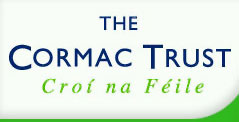Public Defibrillators do Save Lives says Study
Lives are being saved by putting electric shock ma-chines in public places, re-searchers have said.
More defibrillators are now being put in public places such as airports, shopping centres and sports grounds, to be used by trained volunteers in the event of someone collapsing with cardiac arrest.
Now a study carried out in Italy has concluded that the machines are safe for use by people who are not doctors.
The team also said that if the response time for using defibrillators is shortened to within eight minutes, they have the potential to save the lives of 15 out of 100 people who collapse suddenly.
In Ireland, a trust fund set up by the family of Cormac McAnallen – who died suddenly in March 2004 when a rare viral condition of the heart struck without warning – has been working to raise awareness of heart conditions and make defibrillators more widely available.
Croke Park said last December that 10 lives had been saved since the stadium was equipped with a defibrillator two years earlier, and the GAA wanted to ensure other grounds are also covered.
The researchers, writing in the European Heart Journal, focused on 2,186 volunteers and lay people who received five hours training to use the automated external defibrillators (AEDs) in the Brescia area.
The team, from the universities of Milan, Brescia and Washington, ass-essed the effect of using the public defibrillators compared to previous data taking into account the number of cardiac arrests and survival rates before the study began in 2000.
Dr Riccardo Cappato, of the University of Milan, said they found that three out of 100 patients in their study survived to one year after their collapse without any neurological problems.
This compared to under one in 100 in the comparison group – even though the time between sending help and arriving at the patient was similar.
“There was an increase in survival for patients in both urban and rural areas, although it was significantly larger in the city than the countryside due to the shorter response time and larger number of defibrillators available.
“In the urban areas, survival rose from just under one and half persons per 100 in the earlier group to four per 100 in the study.
“In the rural areas it rose from one per 200 in the earlier group to two and a half per 100 in the study.
“When you look at the relative gains though, as opposed to the absolute values, there was more benefit for the rural areas.”
He said the study proved that defibrillators could easily and safely be operated by lay people.
Colin Elding of the British Heart Foundation said: “Modern defibrillators are becoming increasingly quick and easy for the lay person to use, which can mean the difference between life and death.”


